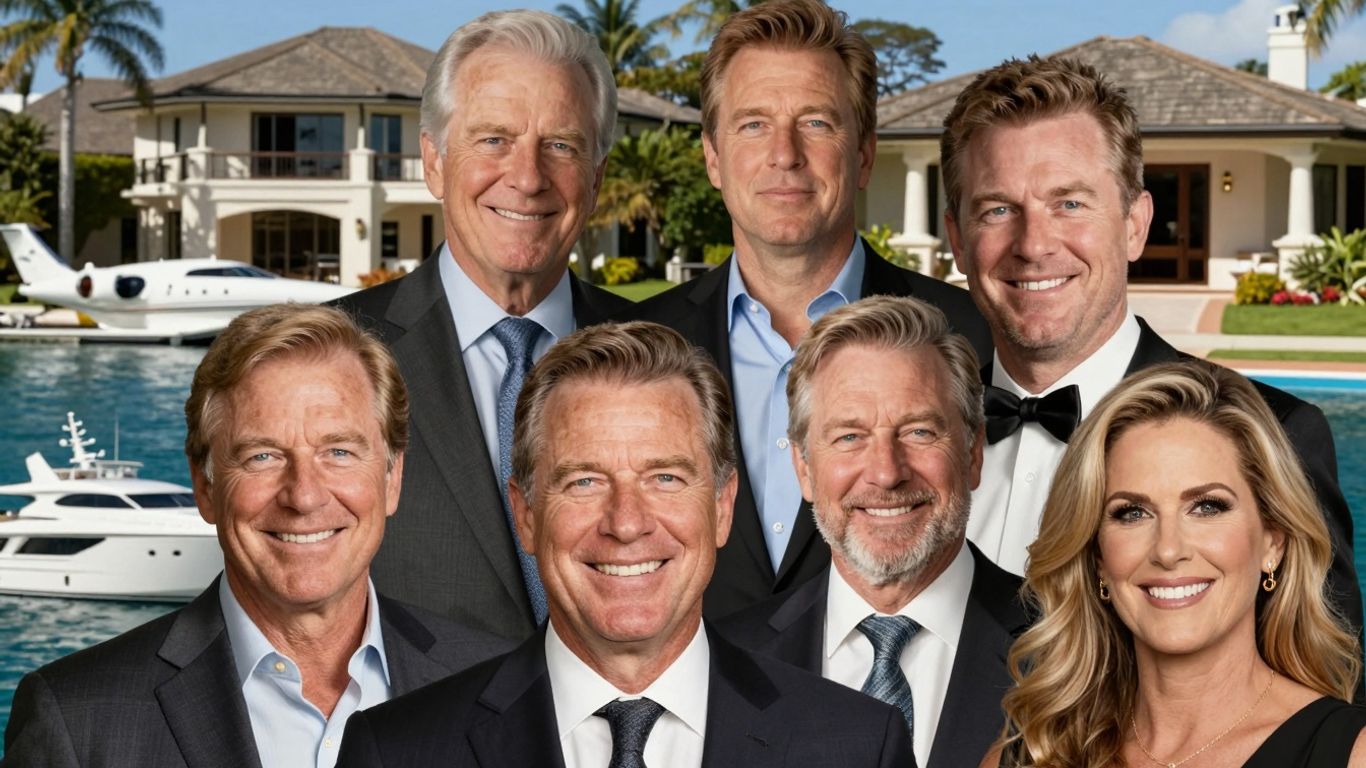G’day! If you’re trying to get your head around hearing health services and who’s who in Australia, it can feel like a bit of a maze. There are a bunch of organisations out there, some government-run, some private, all working in different ways to help people with hearing issues. This guide is here to break it all down, looking at the main players and how they fit into the picture for everyday Aussies. We’ll cover everything from government programs to the tech side of things, making it easier to understand where to go and what to expect.
Key Takeaways
- Government funding, through programs like the NDIS and the Hearing Services Program, plays a big role in making hearing services more accessible, especially for certain age groups and those with concession cards. Sorting out any administrative hiccups is key to making sure people get the help they need smoothly.
- Having clear and fair pricing across all hearing centres is important. Separating device makers from audiologists can also help people feel more confident when choosing hearing aids and services. More openness about how things work and what they cost builds trust.
- Organisations like Australian Hearing, The Shepherd Centre, and RIDBC are major players. Australian Hearing is government-owned and provides a wide range of services. The Shepherd Centre focuses on early help for kids, while RIDBC advocates for specific provider roles, especially within new schemes like the NDIS.
- Making sure people from all backgrounds, including those from Culturally and Linguistically Diverse (CALD) communities, can easily get hearing help is vital. This means having services that understand different cultures and can communicate well with people who don’t speak English as their first language.
- Improving hearing screening, especially for newborns and at school, is a focus. Automatic referrals to specialists and better national monitoring of these programs are recommended to catch hearing problems early and ensure kids get the right support.
Understanding Australia’s Hearing Services Landscape
Australia has a pretty involved system when it comes to hearing health, and it’s mostly shaped by government funding and the organisations that deliver services. It can feel a bit like a maze trying to figure out who does what and how it’s all paid for, but understanding the basics is super helpful.
When it comes to paying for hearing help, the government plays a big part. For adults, there are a couple of main programs that can help out. The National Disability Insurance Scheme (NDIS) is one, and then there’s the Hearing Services Program. The Hearing Services Program is there for younger folks, generally under 26, and also for older adults who have a pension, are veterans, or hold a concession card. It’s important that the support offered matches what someone actually needs after they’ve been assessed. Sometimes, even with the NDIS available, getting the funds sorted can be a bit of a hassle with the paperwork. Making sure these processes are smooth and efficient is key.
The Role of NDIS and Hearing Services Program
These two programs are the backbone for many Australians needing hearing support. The Hearing Services Program, for instance, has been around for a while and provides a range of services, including hearing tests and hearing devices, to eligible people. The NDIS, on the other hand, is broader and can cover hearing-related needs as part of a person’s overall disability support plan. It’s designed to be flexible, but as mentioned, administrative hurdles can sometimes slow things down. The goal is to make sure that people can actually get the help they need without too much red tape.
Ensuring Equitable Access Through Standardised Pricing
One of the big conversations happening is about making sure everyone can get the same level of care, no matter where they live or who they see. This often comes down to pricing. If prices are all over the place, it’s hard for people to know if they’re getting a fair deal. Having clear, consistent pricing across the board would make things much fairer. It also helps when people can clearly see the difference between the companies that make hearing devices and the audiologists who provide the actual care. This separation can build trust. Policy makers are looking at how to work with professional groups, like Audiology Australia, to get a better handle on how these businesses work and to set some standard pricing rules. Being upfront about how services are run and what they cost is a big step towards people feeling confident in their choices and making informed decisions about hearing aids.
Making sure that hearing services are accessible and affordable for everyone is a continuous effort. It involves looking at how government programs work, how services are priced, and how transparent the whole system is for the people using it.
Key Organisations in Australian Hearing Health
Australia has a number of organisations that play a big part in hearing health. It’s good to know who they are and what they do, especially if you or someone you know is dealing with hearing loss.
Australian Hearing: Government Ownership and Services
Australian Hearing is a bit of a unique one. It’s owned by the government, and this has been a point of discussion for a while, with some people suggesting it should be privatised. However, the government decided to keep it fully owned and controlled by them. This means it’s not just another business; it has a specific role in providing hearing services. They are involved in things like offering subsidized hearing services and devices to eligible Australians through the Hearing Services Program. They also have a role in early intervention for children.
The Shepherd Centre and Early Intervention
The Shepherd Centre focuses a lot on helping young children with hearing loss. They are all about early intervention, which means getting help to kids as soon as possible after they’re diagnosed. This is super important because the earlier kids get support, the better they can develop their listening and speaking skills. They work with families to give them the tools and knowledge they need to help their children thrive.
RIDBC’s Advocacy for Obligated Providers
The Royal Institute for Deaf and Blind Children (RIDBC) is another significant player. They’ve been involved in discussions about the future of organisations like Australian Hearing. RIDBC has advocated for specific types of providers, sometimes referred to as ‘obligated providers’, to ensure that certain services are consistently available. They’ve also been part of consortiums looking at how hearing services are structured in Australia, aiming to make sure that important services aren’t compromised.
Cochlear Ltd and Industry Contributions
Cochlear Ltd is a big name in the hearing device industry, particularly known for cochlear implants. While they are a commercial entity, their work is vital in providing advanced technological solutions for people with severe to profound hearing loss. They contribute to the hearing health landscape not just through their products but also by being involved in research and development, and sometimes in discussions about the broader hearing services sector in Australia. Their involvement highlights the mix of government services, non-profit organisations, and industry players that make up the hearing health system.
Supporting Diverse Communities’ Hearing Needs

When we talk about hearing health in Australia, it’s easy to focus on the general population. But we’ve got a lot of people here from different backgrounds, speaking different languages, and they often face extra hurdles when it comes to getting the hearing help they need. It’s not just about having a hearing problem; it’s about how you access the services to fix it, especially if English isn’t your first language or if you’re from a community that hasn’t traditionally engaged with health services.
Addressing Hearing Healthcare Access for CALD Backgrounds
Culturally and Linguistically Diverse (CALD) communities can find it tough to get hearing support. This isn’t because they don’t want to; it’s often due to a mix of things like not knowing where to go, language barriers, or even cultural beliefs about health. We need to make sure that everyone, no matter their background, can get their hearing checked and treated. This means actively reaching out and making services welcoming.
Here are some ways we can improve access:
- Partnering with community groups: Working with organisations that already have the trust of CALD communities is a smart move. They know the people, they know the culture, and they can help spread the word about hearing health in a way that makes sense.
- Tailored outreach: Instead of just putting up posters, we need to go into communities. This could mean holding information sessions in local community centres, using local radio stations, or even having trusted community leaders talk about the importance of hearing.
- Financial help: Hearing aids and audiology appointments can be expensive. For many CALD families, this is a big barrier. Offering subsidies or financial assistance programs specifically for these communities can make a huge difference.
The Importance of Culturally Sensitive Services
It’s not enough to just offer services; they need to be right for the people using them. This means understanding that different cultures have different ways of looking at health and illness. What might be a simple hearing check for one person could be a big deal for another, depending on their upbringing and beliefs.
A person-centred approach is key here. It means listening to what the individual needs, not just their ears. It involves understanding their family’s role in their life, their social circles, and how they prefer to make decisions about their health. When health professionals take the time to understand these things, they can provide much better support.
Bridging Communication Gaps for Non-English Speakers
Communication is obviously a big one when it comes to hearing. If someone can’t speak English well, or if the audiologist doesn’t speak their language, it’s going to be a struggle. This is where having interpreters available is super important. But it goes beyond just having an interpreter on the phone.
- Multilingual resources: Having brochures, websites, and appointment reminders in different languages helps people feel more comfortable and informed.
- Bilingual staff: If hearing clinics can employ staff who speak different languages, it builds trust and makes the whole experience smoother for clients.
- Clear explanations: Audiologists need to be mindful of how they explain things. Using simple terms, checking for understanding, and perhaps even using visual aids can help bridge any language or understanding gaps, even if an interpreter is present.
Enhancing Hearing Screening and Intervention Programs
It’s pretty concerning when you think about how many kids might be missing out on early help for hearing issues. While newborn hearing screening is a good start, a big chunk of childhood hearing loss isn’t picked up right away. This can really mess with a child’s learning and making friends once they start school.
Universal Newborn Hearing Screening Initiatives
Australia has a system for checking babies’ hearing soon after they’re born, which is great. The idea is to catch any problems early. However, it seems like not all babies are getting screened, or some might slip through the cracks without proper follow-up. We really need a national system to keep tabs on how these screening programs are doing. This way, we can make sure every child gets the attention they need and no one gets left behind.
Paediatric Audiologist Referrals and Bulk Billing
For kids who aren’t picked up at birth, or if issues arise later, getting them to see a paediatric audiologist is key. Making it easier for parents to get these appointments, perhaps through bulk billing and a simpler referral process, would make a huge difference. Some ideas floating around include using simple, validated apps for school-based screenings. If a child flags something during a screening, a straightforward path to seeing an audiologist, possibly with bulk billing available, would speed things up. This means quicker diagnosis and treatment, which is so important for a child’s development.
National Monitoring of Screening Program Quality
Right now, there isn’t a solid national system for tracking the results of newborn hearing screenings. We don’t really know if all babies are being checked or if they’re getting the follow-up care they need. Setting up a national data collection and monitoring process would help us see where the gaps are. This kind of oversight is also a good idea for any school-aged hearing screenings we might introduce. It’s all about making sure the programs are working as well as they can for everyone.
The cost and time involved in running screening programs can be a sticking point. Some research has suggested that screening every child might not always be the most cost-effective approach, especially if only a small percentage of children are found to have issues. However, the long-term benefits of early detection and intervention for a child’s life are pretty significant.
Here’s a look at some suggested screening ages:
- Newborns (already in place, but needs better monitoring)
- Preschool or first year of school
- Ages 50 and over (to align with other health checks)
The Future of Hearing Health in Australia

Looking ahead, making hearing health a national priority is a big step we need to take. It’s not just about fixing problems after they happen; it’s about preventing them and making sure everyone has a fair shot at good hearing. We’ve got a lot of work to do to get there, and it involves a few key areas.
Advocating for Hearing Health as a National Priority
We need to shift how we think about hearing. It’s not just an age-related issue; it affects people of all ages and has a ripple effect on overall health and well-being. Treating hearing health with the same importance as vision or dental care would make a huge difference. This means more funding for research, better public awareness campaigns, and making sure hearing services are readily available and affordable for everyone, no matter where they live or their financial situation. The Roadmap for Hearing Health Initiatives gives us a good starting point for what needs to happen.
Addressing Shortages of Auslan Interpreters
For our Deaf and hard-of-hearing community members who use Auslan, having enough qualified interpreters is absolutely vital. Without them, accessing essential services, education, and even social events becomes incredibly difficult. We’re seeing a real shortage, and this needs a concerted effort to train and support more Auslan interpreters. This includes:
- Developing more training programs for aspiring interpreters.
- Providing better support and professional development for existing interpreters.
- Increasing awareness within the broader community about the importance of Auslan and the need for interpreters.
The Significance of Professional Audiology Bodies
Organisations like Audiology Australia and others play a massive role in shaping the future. They set standards, advocate for better policies, and support audiologists and other hearing health professionals. Their work is key to making sure the services we get are top-notch and based on the latest evidence. They also help in areas like standardising pricing and making sure there’s transparency between device manufacturers and the audiologists you see. This builds trust and helps people make better choices about their hearing aids.
The path forward requires a united front. It means governments, healthcare providers, researchers, and the community all working together. We need to be proactive, not just reactive, when it comes to hearing health. This includes looking at things like regular hearing checks for adults, not just newborns, and making sure support is there for people from all backgrounds.
It’s a complex picture, but by focusing on these areas, we can build a future where hearing loss doesn’t hold people back.
Navigating Hearing Device Providers and Audiologists
When you’re looking into hearing aids or cochlear implants, it can feel like a bit of a maze trying to figure out who’s who and what they do. You’ve got the companies that make the devices, and then you’ve got the audiologists and audiometrists who assess your hearing and fit the devices. It’s really important to know the difference between them.
Separating Device Manufacturers and Audiologists
Think of it this way: the device manufacturers are like the car makers. They design and build the hearing aids or cochlear implant components. Companies like Cochlear Ltd are in this space, focusing on the technology. On the other hand, audiologists and audiometrists are like the mechanics or car fitters. They’re the health professionals who test your hearing, figure out what kind of device might work best for you, and then actually fit and adjust it. They’re the ones you’ll see for appointments and ongoing support. Sometimes, the lines can seem a bit blurred, especially if a clinic is associated with a particular brand, but ideally, they operate independently to give you the best advice for your specific needs.
Building Client Trust Through Transparency
It’s a big deal when you’re investing in your hearing. You want to feel confident that you’re getting honest advice and fair pricing. This is where transparency really comes into play. When audiologists are upfront about their costs, the different device options available, and any potential funding you might be eligible for, it makes a world of difference. Knowing exactly what you’re paying for and why builds a strong sense of trust. It means you can focus on getting the best hearing solution without worrying about hidden fees or feeling pressured into a particular choice.
Informed Decision-Making for Hearing Aid Models
Making the right choice about hearing aids or cochlear implants involves a few steps. Here’s a general idea of what to expect:
- Hearing Assessment: An audiologist will conduct a thorough test to understand the type and degree of your hearing loss.
- Needs Discussion: You’ll talk about your lifestyle, communication challenges, and what you hope to achieve with a hearing device.
- Device Options: Based on the assessment and discussion, the audiologist will present suitable device options, explaining their features and benefits.
- Trial Period: Many devices come with a trial period, allowing you to test them in real-world situations before committing.
- Fitting and Adjustment: Once you’ve chosen a device, the audiologist will fit it and make adjustments to ensure it’s comfortable and working effectively.
Sometimes, the process of getting hearing support can feel complicated, especially with different funding programs and the sheer number of device choices. It’s helpful to remember that your audiologist is there to guide you through this. Asking questions about pricing, the technology, and what’s covered by your health insurance or government programs is always a good idea. They should be able to break it down so you can make a choice you feel good about.
It’s also worth noting that sometimes, people might need to see different professionals for different parts of the process. For example, you might see a GP first, then an audiologist, and perhaps even a specialist surgeon for cochlear implants. Understanding who does what can make the whole journey smoother.
Wrapping Up: Finding Your Way with Hearing Support
So, we’ve looked at a bunch of different organisations and programs out there in Australia that can help with hearing. It can seem like a lot to take in, right? From government programs like the NDIS and Hearing Services, to specific groups focusing on kids or different communities, there’s a fair bit to sort through. The main thing is knowing that support is available, whether you’re looking for services, information, or just someone to talk to. Don’t be afraid to reach out to these groups; they’re there to help make things a bit easier for everyone dealing with hearing loss or related issues. Finding the right fit might take a little time, but it’s definitely worth the effort.
Navigating Hearing Organisations Across Australia: A Comprehensive Guide
What are the main government programs that help people with hearing loss in Australia?
Australia has a couple of big government programs to help. The Hearing Services Program is for younger folks and certain older adults like pensioners or veterans. Then there’s the NDIS (National Disability Insurance Scheme), which can also help if hearing loss is a disability. These programs aim to make hearing care more affordable and accessible for many Australians.
Who is Australian Hearing and what do they do?
Australian Hearing is a government-owned organisation that provides hearing services and devices. They have a wide reach across the country and are known for offering services to eligible clients, including those under the Hearing Services Program. They play a significant role in the Australian hearing health system.
Why is it important for hearing services to be culturally sensitive?
Australia is a multicultural country, and many people come from different backgrounds. It’s super important that hearing services understand and respect these differences. This means having staff who can communicate well with people who speak different languages or come from different cultural traditions, making sure everyone feels comfortable and understood when seeking help for their hearing.
What are the ‘universal newborn hearing screening’ programs?
These are programs designed to check the hearing of all babies shortly after they are born. Catching hearing problems early is really important for a child’s development. These screenings help identify any issues quickly so that kids can get the support they need right from the start.
What’s the difference between hearing device makers and audiologists?
Think of device makers like Cochlear as the companies that create the technology, like hearing aids or cochlear implants. Audiologists, on the other hand, are the health professionals who test your hearing, figure out what kind of hearing loss you have, and then help you choose and fit the right devices. It’s good to know who does what so you can get the best care.
What is being done to make sure everyone can get hearing help, no matter where they live or their background?
There’s a big push to make sure hearing services are fair for everyone. This includes trying to have the same prices for services across the country and making sure people from different cultural backgrounds or those who don’t speak English well can still get the help they need. It’s all about making sure no one misses out on essential hearing care.





